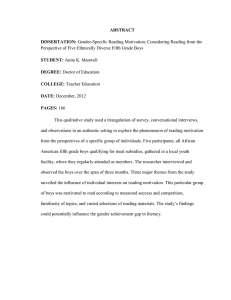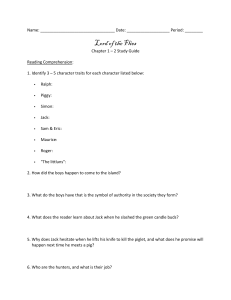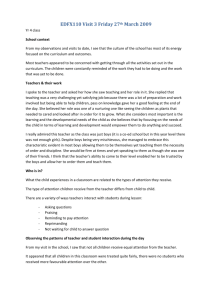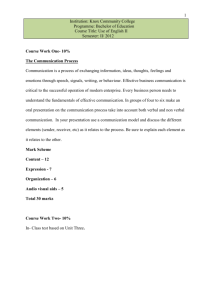3D Printed Implants Save The Lives Of 3 Babies
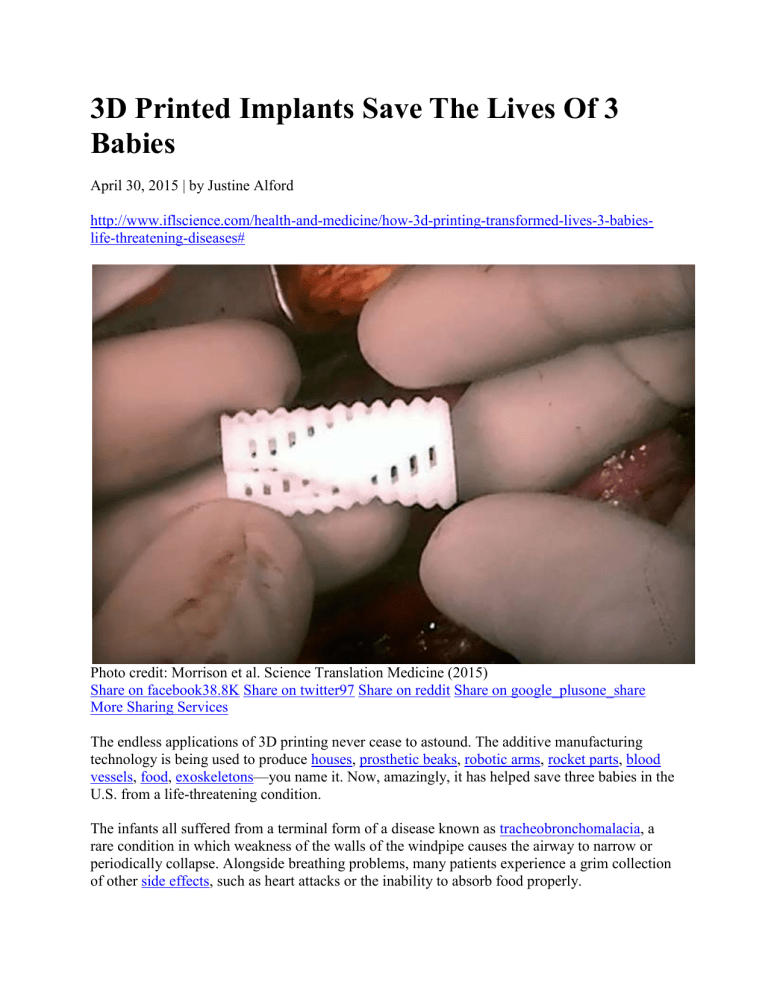
3D Printed Implants Save The Lives Of 3
Babies
April 30, 2015 | by Justine Alford http://www.iflscience.com/health-and-medicine/how-3d-printing-transformed-lives-3-babieslife-threatening-diseases#
Photo credit: Morrison et al. Science Translation Medicine (2015)
Share on facebook38.8K
Share on twitter97 Share on reddit Share on google_plusone_share
More Sharing Services
The endless applications of 3D printing never cease to astound. The additive manufacturing technology is being used to produce houses , prosthetic beaks , robotic arms , rocket parts , blood vessels , food , exoskeletons
—you name it. Now, amazingly, it has helped save three babies in the
U.S. from a life-threatening condition.
The infants all suffered from a terminal form of a disease known as tracheobronchomalacia , a rare condition in which weakness of the walls of the windpipe causes the airway to narrow or periodically collapse. Alongside breathing problems, many patients experience a grim collection of other side effects , such as heart attacks or the inability to absorb food properly.
Although many children outgrow the condition by the age of two or three after newly developed tissue has reinforced the floppy airways, as The Verge points out, many children die before they have a chance to become strong enough. This was unfortunately the likely outcome for the three young boys enrolled in the trial, all of whom had spent extended periods in intensive care.
Starting back in 2012 with the first patient, Kaiba Gionfriddo, senior study author Glenn Green and biomedical engineering professor Scott Hollister used 3D printing to create tailored tracheal splints for each individual patient. These were designed from CT scans that provided details of the exact size and shape of their trachea. Surgeons then stitched these hollow stints to the outside of the trachea so that the weak airway remains open.
The implants were designed to be flexible to allow for movement, but also so that the boys would not quickly outgrow them. The material they used was a cheap and harmless plastic called polycaprolactone that slowly breaks down over 3 or 4 years upon exposure to bodily fluids, and is then reabsorbed by the body.
As reported in Science Translational Medicine , the surgery was a success in all three boys and has significantly improved their lives. After following the progress of the children, who are now between 17 months and 3 years old, the researchers found that all of them no longer exhibit lifethreatening airway disease, and the complications associated with their condition have resolved.
It worked so well that all boys were taken off mechanical ventilators and could go home.
Furthermore, they found that the boys’ airways grew over time and their stints had successfully degraded.
Although this trial was certainly a success story, because it was not designed to assess safety, it is possible that the procedure may cause complications that were not evident in this small study.
But now that some patients have benefitted, hopefully larger future trials can build on this preliminary work, perhaps involving individuals with less severe forms of the disease.
“We were pleased to find that all of our cases so far have proven to improve these patients’ lives,” Green said in a statement . “The potential of 3D-printed medical devices to improve outcomes for patients is clear, but we need more data to implement this procedure in medical practice.”
